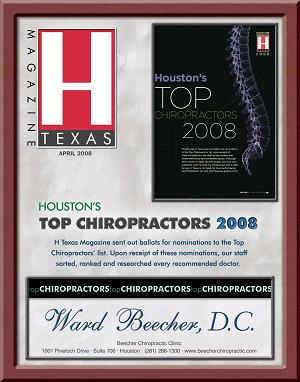Do You Need Surgery for Your Headache?
To download a copy of this week’s newsletter, please click here.
Clear Lake Chiropractor Comments: I certainly hope not. Unless you’ve got a brain tumor, surgery is rarely an option considered by people with benign headaches. When I say benign, I mean not caused by cancer or some other
serious medical disorder. Benign headaches can, in fact, be quite disabling and completely disrupt a person’s quality of life. Work and exercise routines may add psychological or physical stress and make the headaches more acute, curtailing activities.

Although most headaches are treated conservatively, surgeons have recently begun to take an interest. Dr. Jansen of Germany reported on a group of 60 patients operated on for headache. They had headaches caused by neck problems, commonly called cervicogenic headaches. These types of headaches respond very well to chiropractic adjustments. In Dr. Jansen’s study, he reports removing the disks of C4, C5, and C6 levels in different patients. He analyzed the results over two years later and found that about 36-37% had deterioration of their condition. Although Dr. Jansen thinks surgery should be considered more often based on his case series, the lack of a control group makes his results suspect, modest as they are.
Surgery is really a very last step in the treatment palette patients should consider. Unfortunately, many patients consider only medications as options for headache management. Some patients will consume so much over the counter medication that their headache is actually aggravated by the heavy use of pain killer medications. Many of these patients will benefit from gradually weaning off of the drugs, if they are in fact medication induced.
The important thing is to first get your headache properly diagnosed because only then can a specific treatment be applied. What is somewhat underappreciated is how common spinal problems can cause head pain.
Cervicogenic and tension-type headaches can commonly result from whiplash trauma and other acceleration injuries of the head and neck. This type of trauma can sprain the cervical ligaments and disks, and cause tears in muscle fibers. Tension-type and cervicogenic headaches have been shown in randomized clinical trials to respond favorably to chiropractic adjustive care. These studies have also shown minimal side effects when compared to certain medications. This is especially true for tension-type medication treatments.
Dr. Ward Beecher practices at Beecher Chiropractic Clinic at 1001 Pineloch, Ste 700 Houston, TX 77062. You can schedule an appointment at BeecherChiropractic.com or by calling (281) 286-1300. If you have any questions regarding this blog, please comment below!
Can Whiplash Hurt Your Shoulder?
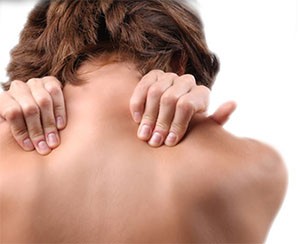 Clear Lake Area Chiropractor Comments: It’s probably more common than you think. Whiplash injuries, especially serious ones, are notorious for causing pain and disability beyond the neck. Whiplash is considered a full body disorder and symptoms can range from pain to dizziness, headache and fatigue. Depending on the type of collision and restraints, other body parts may be injured as well. One study looked at shoulder complaints in individuals who had suffered a whiplash type of trauma. Out of 220 patients with whiplash, 26% had shoulder symptoms and 5% had what is known as an impingement syndrome.
Clear Lake Area Chiropractor Comments: It’s probably more common than you think. Whiplash injuries, especially serious ones, are notorious for causing pain and disability beyond the neck. Whiplash is considered a full body disorder and symptoms can range from pain to dizziness, headache and fatigue. Depending on the type of collision and restraints, other body parts may be injured as well. One study looked at shoulder complaints in individuals who had suffered a whiplash type of trauma. Out of 220 patients with whiplash, 26% had shoulder symptoms and 5% had what is known as an impingement syndrome.
Referred pain from the neck and nerve injury to the muscles that stabilize the shoulder can give rise to an impingement syndrome. Also, direct trauma from the pressure supplied by a seatbelt during a frontal impact can cause fracturing of cartilage and sprain of the surrounding ligaments. The pointy top of the shoulder is the acromium and some impingements (binding and compression) can affect the tendons of the rotator cuff or other soft tissues just under this bone. Sometimes a bursa (fluid filled sac) can swell during the night causing pain.
Because most patients with whiplash who have shoulder pain are thought to have referred pain from the neck, an impingement syndrome may be overlooked. This can delay treatment, resulting in prolonged disability, pain, and chronicity.
An MRI may be needed to fully diagnose the problem and confirm the lesion. Sometimes the labrum, cartilage surrounding the bone, can break away causing significant pain. There may be inflammation surrounding the different tendons as they are caught between the shoulder bone and the soft tissues. Most shoulder injuries can be conservatively treated and rarely require surgery.
Chiropractors are trained to differentiate between neck and shoulder problems and provide specific treatments to each area. Sometimes, an adjustment may be needed to align the shoulder joint or neck. In other cases the shoulder can be helped by specific exercises for the rotator cuff muscles. The important part of this issue is first getting the problem properly diagnosed. If you don’t know what is causing the pain, it is nearly impossible to have a specific, effective solution.
Dr. Ward Beecher practices at Beecher Chiropractic Clinic at 1001 Pineloch, Ste 700 Houston, TX 77062. If you are experiencing neck pain in Houston you can schedule an appointment at BeecherChiropractic.com or by calling (281) 286-1300. If you have any questions regarding this blog, please comment below!
Is Low Back Pain Serious?
To download a copy of this week’s newsletter, please click here.
Clear Lake Doctor of Chiropractic Comments: Back problems can cause a good deal of worry and for good reason. Any problem that doesn’t go away on its own in a reasonable period of time should be a cause for concern. Rarely, severe low back pain can be caused by tumors and other destructive processes, so it’s important to have these serious conditions ruled out with a thorough examination and x-rays or other imaging.
The other serious aspect of back pain, much more common than a spinal cord tumor, is how it can affect your quality of life, often with devastating consequences.
Research has shown how disabling severe back problems can be. In terms of quality of life, the decrease can be even more than that seen with heart and lung problems.
This may not seem correct at first glance, but if you think about a back problem making you unable sit or function at work, or basically being able to enjoy life, then it becomes more understandable.
The trouble is, many of us think lying on the couch will do the trick, or taking aspirin every day is a good long-term solution.
Sprain subluxations that displace the joints of your spine are sometimes referred to as mechanical disorders. These can be detected by analyzing how your spine moves in a precise manner. Sometimes x-rays can show displacements of the lumbar vertebrae or pelvic bones. X-rays are taken from two angles to see the alignment of the spinal joints. X-rays can also show bone destructive or degenerative processes that help to diagnose your problem, and show if adjustments are indicated.
We direct our care at improving the posture and mobility of the spine as a way to speed recovery. We find that just addressing the pain with medications or adhering to strict bed rest can be counter productive. The adjustments are applied in a careful and specific manner. As the loads on the spine are more equalized and as joints begin to exhibit more flexibility, the body is placed in a more optimal environment for healing. Since self-care is also integral to our approach, we will encourage proper stretching and exercises to help maintain and extend what we can do in the clinic.
Dr. Ward Beecher practices at Beecher Chiropractic Clinic at 1001 Pineloch, Ste 700 Houston, TX 77062. You can schedule an appointment at BeecherChiropractic.com or by calling (281) 286-1300. If you have any questions regarding this blog, please comment below!
The Importance of Correctly Diagnosing Your Headache
To download a copy of this week’s newsletter, please click here.
Clear Lake Chiropractic Clinic Comments: All good doctors know the importance of getting an accurate diagnosis of a patient’s problem. But why is correctly diagnosing a headache so important? It’s important because without knowing what is the disease or injury, the treatment cannot be directed to the actual problem.
Unfortunately, when it comes to headaches, many patients do not receive an accurate diagnosis. If a patient were to see a doctor with a pain in the head and the doctor were to conclude that you have a pain in your head (headache), this tells little about the actual problem. In headache patients, we’ve become very good at labeling problems-giving them a name. If the headache comes and goes we call it episodic. If it occurs suddenly we call it acute, and if it occurs over many years we say it is chronic. But are these labels really helpful?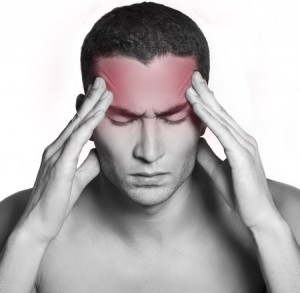
The reality is everyday people show up in doctors’ offices, obtain cursory examinations and walk out with a prescription for their head pain. Not all doctors do this, of course, but with the time constraints of managed care and the insurance company oversight, a doctor’s visit is just not what it used to be. When was the last time you had a house call from a doctor? Of course, the worst case is when a patient acts as their own doctor, sees an advertisement for a pill and does the diagnosing himself or herself!
In chiropractic, we may also label your headache as tension-type, migraine or chronic, but a good chiropractor will not stop there. The label does not give much of an indication of what needs to be done, and more importantly we still do not know the CAUSE of the pain. Clinical experience and research over many decades has shown that many headaches are actually caused by injuries to the neck and spine. But if a doctor does not examine the neck, they may not discover these hidden injuries. Sometimes an astute doctor will take a history and it may be discovered you had a whiplash or other neck trauma, months or even years earlier. This is important information to get at the cause.
We take a comprehensive approach to headache treatment at our clinic. A detailed history about the location, duration, and quality of pain is followed up by a thorough physical examination, especially of your spinal column. We may also order imaging tests such as x-rays to see the positions of the individual vertebrae in your neck.
The normal neck has a forward curve or arch, which keeps your head upright and directly above your shoulders. When this curve is lost, the patient’s head is thrust forward in the classic “bad posture” stance. Making sure your neck is both flexible, and in good postural alignment, is critical to maintaining good health.
Dr. Ward Beecher practices at Beecher Chiropractic Clinic at 1001 Pineloch, Ste 700 Houston, TX 77062. You can schedule an appointment at BeecherChiropractic.com or by calling (281) 286-1300. If you have any questions regarding this blog, please comment below!
Hand Pain and Its Causes
Clear Lake Chiropractor Comments: When hand pain strikes, it can be a difficult problem to deal with since we use our hands for so much; our work, our play. It can also be distressing psychologically to have a part of your body not working as it should.
Hand pain can be a difficult thing to diagnose since there are many causes of hand pain. One familiar cause is a carpal tunnel syndrome. This is where the bony tunnel in the wrist is narrowed, entrapping the nerves that pass through and go into the hand.
Another cause for hand pain is a thoracic outlet syndrome. The thoracic outlet can be compressed in the shoulder girdle region causing hand pain, often at night. 
The last thing to consider with hand pain is a neck problem such as a disk lesion compressing the nerves in the neck causing referred or radicular (nerve root) pain into the hand.
These three problems can independently cause hand pain or they can all co-exist to varying degrees. You are entitled to more than one cause, correct? Getting a proper diagnosis is the first key to a full correction of a problem. If your hand pain is being treated with analgesics (pain killers), there may be a reduction in pain sensations but pain medications cannot release an entrapped nerve. You might also want to consider that pain is a signal. The problem that is causing the pain should be a patient’s focus. When the fire alarm goes off at home do we think to put out the fire alarm, or put out the fire? Pain is the fire alarm, not the fire.
Recent research has shown that differentiating between these three unique disorders with clinical tests can be problematic, since false positive tests are more a rule, rather than an exception. Patients with carpal tunnel syndrome were one of the most frequently misdiagnosed groups of patients.
You may also need x-rays of your spine to fully get at the cause of your hand pain and determine the best course of action; pills, surgery or specific chiropractic care. Chiropractic is an often-overlooked conservative form of care. It carries very low risks, and should be a considered option for anyone who is considering bracing, medications or wrist surgery
Dr. Ward Beecher practices at Beecher Chiropractic Clinic at 1001 Pineloch, Ste 700 Houston, TX 77062. You can schedule an appointment at BeecherChiropractic.com or by calling (281) 286-1300. If you have any questions regarding this blog, please comment below!
Low Back Pain: Could Your Feet or Hips Be at Fault?
To download a copy of this newsletter, please click here.
Houston Chiropractor Comments: The body is an interconnected whole and needs to be looked at as such in order to get at the root of a spinal problem. We are all familiar with low back trauma, bending and stooping in awkward positions to lift something from a trunk, or the slip and fall on ice. In these examples, it’s easy to see how the trauma preceded the low back pain.
But sometimes pains in the low back are not so easy to figure out. One area of the spine could be compensating in posture for another, inhibiting a vertebral joint’s ability to fully recover. Or maybe you’re suffering from the cumulative affects of microtrauma over time.
Such is the short leg; about 1/10 people will have an anatomic difference in leg length of up to one centimeter. This short leg causes the pelvis to incline to one side providing an uneven support for  the base of your spine. It’s a little like walking with one foot in a small ditch. The uneven pelvis then causes a lumbar scoliosis, which must be further compensated from above.
the base of your spine. It’s a little like walking with one foot in a small ditch. The uneven pelvis then causes a lumbar scoliosis, which must be further compensated from above.
But a short leg can also be functional, due perhaps to a small or collapsed arch of the foot. This can account for up to 5 mm of leg length difference. Do you have a history of having flat feet or have you ever sprained one of your ankles? The sprained ankle can damage ligaments to such a degree that the normal arch of the foot can no longer be maintained.
Depending on the degree of the problem we may be able to help your low back pain by correcting a problem in the foot. Many in-shoe orthotics are available to correct a fallen arch. If the problem is very severe, you may also need a visit to a podiatrist.
In any case, it’s important to consider the foundation of a spinal problem, and it can be as simple a problem as bad foot posture that is affecting how your low back functions. Also, problems in the sacroiliac joint or hips can affect how the lower spine moves.
So pay attention to where the pain is located, but also consider that other joints nearby may be affecting your recovery as well.
As a doctor of chiropractic, my office is fully equipped to handle problematic low back conditions that don’t seem to clear up in response to what you’ve tried in the past. Have your feet been checked? Has someone looked at your posture carefully?
Dr. Ward Beecher practices at Beecher Chiropractic Clinic at 1001 Pineloch, Ste 700 Houston, TX 77062. You can schedule an appointment at BeecherChiropractic.com or by calling (281) 286-1300. If you have any questions regarding this blog, please comment below!
Could Neck Problems Be Affected By Your Posture?
Clear Lake Chiropractor Comments: While most of us have a look in the mirror at least once a day, few of us look at our appearance from a different angle, such as from the side. But, the view from the side can be quite revealing if you suffer from chronic neck pain in Houston.
First, note the position of your head in relation to you shoulders. Is it right above the shoulders or does it lean forward from your chest? If it does, this would be called forward head posture, and can come from a problem in your neck. Lower areas of your spine can also cause this problem. Some of us have increased our weight over the years with much of it added to our abdominal region. Because of this increased core weight, the body must counter-balance the weight gain by causing the lumbar spine to “sway- back.”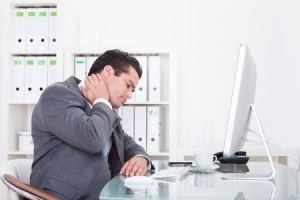
While this “sway-back” problem can create pain in the lumbar spine, it can also have far reaching effects in the posture of the neck. Usually someone with a protruding stomach and sway back will have somewhat rounded shoulders and a forward head posture. If treatment is only directed at the neck without considering how other areas may affect the stability of the neck, then the results may be less than optimum.
In an accident, many areas of the body can potentially be injured.
As a chiropractor, I not only look at your primary injuries but also how mechanically one area of the spine can affect a distant area. These more distant areas can cause neck pain by referral or they can impede complete recovery because the body is compensating for abnormal posture or movement elsewhere.
X-rays of the full spine can show this abnormal posture as can a detailed postural analysis from our office.
So do you like what you see when you view your posture from the side? If your posture leaves something to be desired, or you’re wondering whether your neck problem could be improved by changing another part of your spine, then it is important to be thoroughly checked. Just examining the neck after a whiplash may leave some injuries undiscovered. Are there tender spots in other areas of the spine? Does your overall upright posture seem lacking?
Dr. Ward Beecher practices at Beecher Chiropractic Clinic at 1001 Pineloch, Ste 700 Houston, TX 77062. You can schedule an appointment at BeecherChiropractic.com or by calling (281) 286-1300. If you have any questions regarding this blog, please comment below!
Have You Lost Work Time Because of Your Low Back Pain?
To download a copy of this week’s newsletter, please click here.
Bay Area Chiropractor Comments: “I can’t believe how much my low back hurts! I don’t know if I can go to work with it like this!” Does this sound familiar? Have you ever missed work because of low back pain? Well, if you have, you’re certainly not alone! In fact, over 80% of the general population seeks some type of health care provision at some point in life because of low back pain and many of those lose work time. Lost work time is often associated with not being able to tolerate certain positions such as prolonged sitting, standing, bending, twisting, reaching, or combinations of these. Sometimes, just getting to work is next to impossible as the car ride alone may intolerable! There is nothing more depressing than not being able to move due to the sharp knife-like feeling in the back every time you try to change positions. 
However, it’s one thing to lose a day or two or even a week of work but what about those that can’t work for longer time periods, like several weeks or even months? This can become life altering as avoidance of moving for fear of that knife-like sensation in the back can quickly lead to muscle weakening, weight gain, lethargy, depression, and a host of other negative residuals. Many articles have been published in the past that tried to identify ways determine early on in the course of back treatment, who might be at greatest risk of not improving or becoming disabled. The term, “yellow flags” has been used to describe such factors and some success in identifying those prone to becoming disabled has been reported. In May 2009, another attempt to identify injured workers who were at risk for becoming disabled or, not being able to return to work for at least 3 months was published. Of the 346 injured workers that were followed for 6 months after the sick leave period began, 47% failed to return to work. There were five questions found to adequately screen those who were not able to return to work or were at greatest risk of becoming disabled. The 5 questions include:
- Do you expect to return to work within 6 months?
- How much does the pain interfere in your daily activities?
- It is not advisable to be physically active?
- Do you feel generally nervous?
- Do you feel generally scared?
The good news is that chiropractic manages these types of acute back pain quicker and better than any other form of health care. This is reflected by the highest percentage of consumers seek chiropractic over any other form of alternative health care for back pain relief according to the May, 2009 issue of Consumer’s Report.
We strive to provide the highest quality care and follow evidence and “best practice” approaches at our clinic and look forward to helping our patients through difficult times like this.
Dr. Ward Beecher practices at Beecher Chiropractic Clinic at 1001 Pineloch, Ste 700 Houston, TX 77062. You can schedule an appointment at BeecherChiropractic.com or by calling (281) 286-1300. If you have any questions regarding this blog, please comment below!
Facts of Carpal Tunnel Syndrome
To download a copy of this week’s newsletter, please click here.
Clear Lake City Chiropractor Comments:
What is it? Carpal Tunnel Syndrome (CTS) occurs when a nerve on the palm side of the wrist is pinched. It is named after the area of the wrist from where the symptoms occur. The Carpal Tunnel is basically a horseshoe shape made from 8 small carpal bones and the ends of the horseshoe are connected with a ligament thus completing the “tunnel.”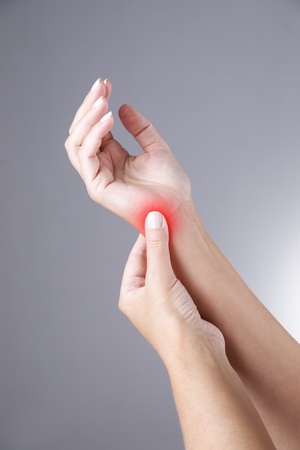
What are the symptoms? CTS symptoms include pain from swelling of the tendons inside the CT. When the nerve pinch occurs, numbness, tingling, or a half asleep sensation into the 2nd, 3rd, and 4th fingers occurs. This is often worse at night due to the wrist being bent when asleep. This often wakes the person and shaking/flicking the hand/fingers is needed to “wake them up.” Grip weakness is also associated with CTS such as difficulty opening jars.
What are the causes? Usually, over use from tasks including repetitive line work (meat/fish/poultry packing, cookie/food packing), typing, sewing, carpentry, waiting tables, and the like. Other “contributors” include hormone related conditions such as hypothyroid, dysmenorrhea, diabetes, and obesity. These fast/repetitive movements cause swelling of the tunnel’s contents (9 tendons and the median nerve) and the nerve is pushed into the ligament connecting the ends of the horseshoe/tunnel.
Who is at risk? Gender is a significant factor as women are 3x more likely to develop CTS than men as the CT may be smaller in woman. The dominant hand is often first affected and more severe. Hormone imbalances as described above also increase risk.
How is it diagnosed? The history of the symptoms as well as physical examination of the hands, arms, shoulders and neck can lead to the proper diagnosis. The exam consists of trying to reproduce the numbness into the fingers by pressing/holding over the CT and other areas where the nerve runs down the arm (including the neck where the nerve originates), tapping over the CT with a reflex hammer, bending and holding the wrists at the extreme endpoints of motion. Also, poking the skin with a sharp object and comparing the 2nd to 4th fingers to other parts of the hand and the opposite side commonly yields differences between the two sides. Questionnaires and hand diagrams completed by the patient are helpful and quantify the degree of severity. Tests used during the course of treatment help track improvements. More sophisticated testing includes an EMG (nerve conduction test) that tests the motor and sensory changes when the nerve is pinched.
How is it treated? Chiropractic approaches include manipulation of the wrist, hand, forearm, shoulder and neck, specifically addressing the areas of greatest restricted motion. Soft tissue therapy includes massage, active release, graston, trigger point, and a host of physical therapy modalities such as light/low level laser, IFC, ultrasound, microcurrent, and low frequency approaches. Exercise training to be repeated multiple times per day is very helpful. Wrist bracing especially at night is also a common treatment approach used by all health care providers. Nutritional counseling and supplementation is also very helpful.
How can it be prevented? Work station assessments, staying in shape (avoid obesity), taking “minibreaks” when doing repetitive work, and proper treatment for conditions like hypothyroid, diabetes, and other disorders associated with CTS.
Dr. Ward Beecher practices at Beecher Chiropractic Clinic at 1001 Pineloch, Ste 700 Houston, TX 77062. You can schedule an appointment at BeecherChiropractic.com or by calling (281) 286-1300. If you have any questions regarding this blog, please comment below!
Low Back Pain and the Hamstrings
To download a copy of this week’s newsletter, please click here.
Houston Chiropractor Comments: Have you ever considered how important your hamstrings muscles are in relationship to the low back? Most people do not think about those tight muscles on the back of the upper leg / thigh as having much to do with low back pain (LBP). However, it is one of the most important muscles groups to keep loose both as a means of improving current low back trouble as well as preventing future LBP. Think of the hamstrings as a stabilizing guide wire that keeps us upright. When we bend over with our knees straight, we can feel the hamstrings gradually tighten, often limiting us from reaching our toes. When the hamstrings are too tight, some of us can hardly reach past our kneecaps as we bend over. We then (unconsciously) bend our knees to put slack in the hamstrings so we can easily reach the floor.
The low back is only so flexible and in reality, most of our ability to touch our toes comes from our hip joints. In fact, after scoliosis surgery where metal rods are placed on both sides of the spine, these patients will often make up for the loss of low back movement by increasing hip motion and still be able to touch their toes! This, however, can only be accomplished if the hamstrings are stretched to a point of allowing the hips and pelvis to rotate forwards when bending with the knees straight.
So, what happens if the hamstrings are too tight? Think of a young sapling tree branch versus an old oak branch. When bending the two branches, the young sapling can easily bend, while the old oak branch breaks early into the process. Similarly, as we bend over to lift a box, when the back and leg muscles, ligaments, and tendons are tight, something has to give or “break,” similar to the old oak branch. The “weak link” in the injured person bending over may be a disc that ruptures, ligaments and/or muscle tendons that overstretch and tear. By keeping the hamstrings loose (like the young sapling branch), much less force is placed on the spine because the pelvis can rock forwards during the bending process, thus unloading the spine. Another way to look at it is that when the hamstrings are too tight, something else has to be correspondingly loose to make up for the tight hamstrings or else the task of bending forwards and performing daily tasks will be limited.
Tissues in our back are injured when forces exceed their capacity to withstand the load. By keeping our hamstrings stretched, we reduce the need for our spine to have to make up for the tightness; thus both preventing a new injury, as well as perpetuating a current problem. The best way stretch the hamstring’s is to sit down on the ground with one leg out straight and the other heel pulled towards your groin. Try and touch your toes with the toes pointed out, up and then in. Maintain that position for at least 10 and then switch legs and do it 3 times each side. Because the hamstrings tighten up during sleep, it’s usually best to perform the stretch in the morning. Repeating this multiple times a day may be required to obtain proper hamstring muscle length. Exercise training is a routine part of chiropractic care!
If you, your family, or a friend is struggling with low back pain, sharing this information may be one of the greatest acts of kindness you can give to that person. At this clinic, we strive to provide the highest quality care and follow evidence and “best practice” approaches. We greatly appreciate the trust that our patients place in us and our services as we help them recover as well as teach ways to prevent future LBP episodes.
Dr. Ward Beecher practices at his Houston Chiropractic Clinic at 1001 Pineloch, Ste 700 Houston, TX 77062. You can schedule an appointment at BeecherChiropractic.com or by calling (281) 286-1300. If you have any questions regarding this blog, please comment below!

